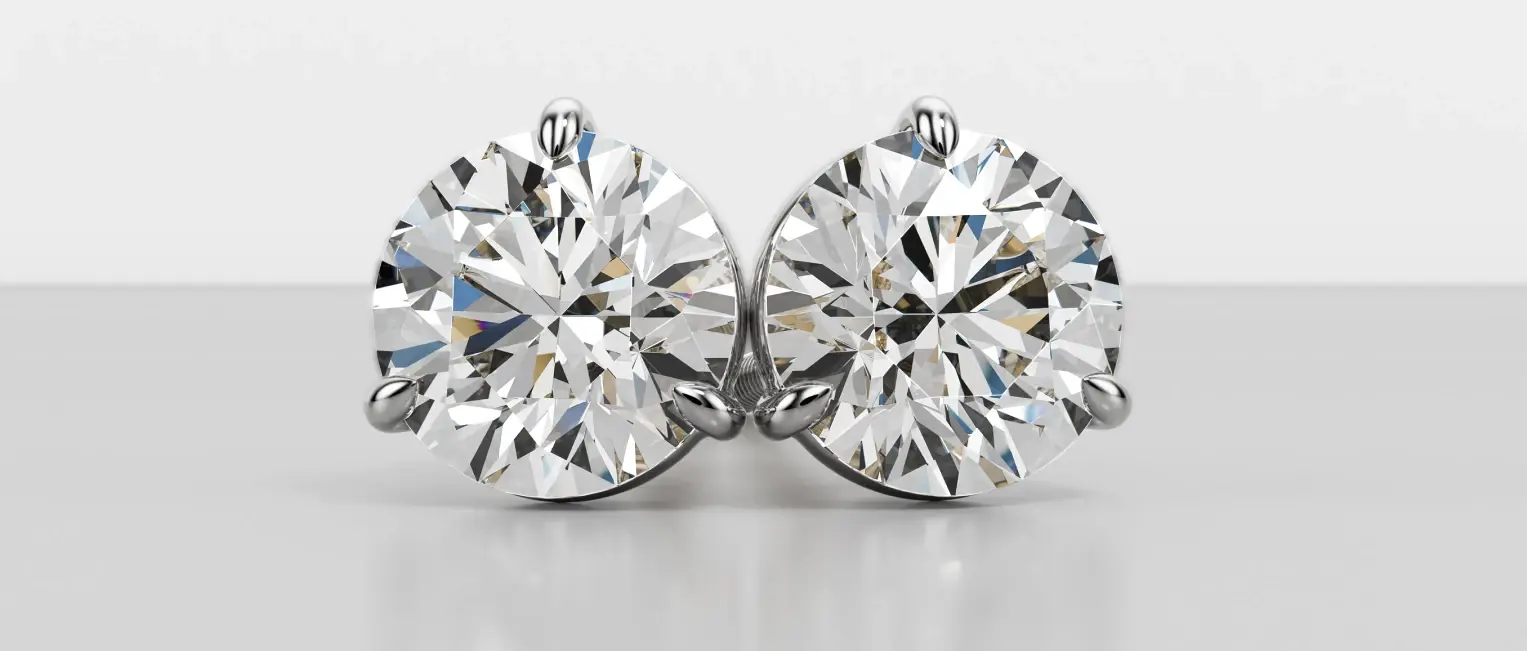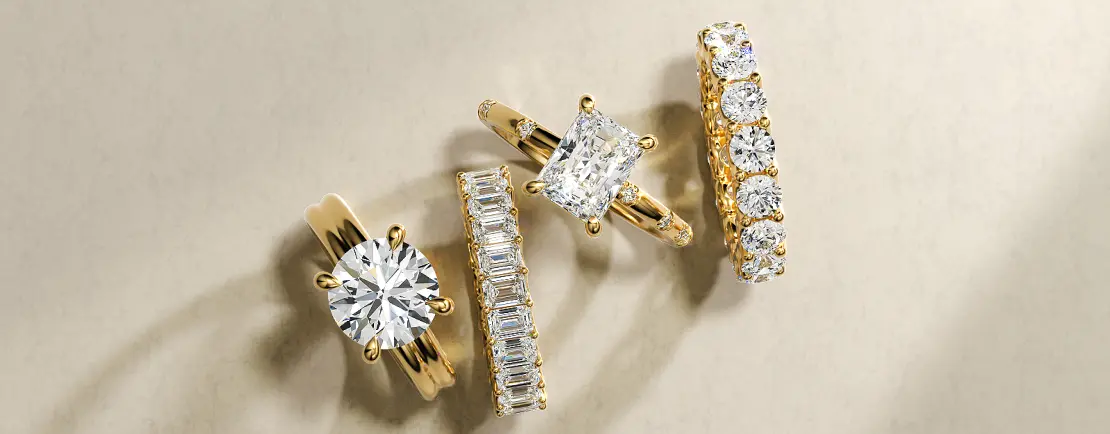What Is a Diamond Bow Tie and Why Does It Matter?
Sep 6, 2023
Diamonds are beloved for their exquisite sparkle and shine, but they don’t all sparkle the same. You’ve probably heard of the “four C’s” of diamond shopping (cut, clarity, color, carat). The way a diamond is cut affects how it reflects light (the sparkle), and not all diamonds will reflect 100% of the light.
This is the case with the diamond bow tie. Also known as the “bow-tie effect”, this is a sign of imperfection and often, poorly cut stones. However, it’s not all bad if you ask the experts. It’s usually seen in fancy diamonds, appearing as a dark area in the center that looks like a ribbon, or a bow—hence the name.
There’s more to it than just calling this a flaw. Read on to learn more about what the bow tie effect is and what causes it, as well as whether it’s something that you should be concerned about when shopping for your next diamond.
The Diamond Bow Tie Effect: A Closer Look
If a diamond isn’t cut correctly, it’s not going to reflect light properly. This can result in the diamond bow tie effect, as mentioned. The bow tie is not caused by coloring, inclusion, or light leakage. It’s a simple issue of light reflection and cut, and how noticeable it is depends on the stone itself.
You can think of this as a shadow inside the diamond, essentially. Like all elements of a stone, it comes in varying degrees, which range from faint to intense. Some bow ties can appear black, which compromises the appearance of the stone significantly. Others are barely visible and don’t detract from the stone’s beauty.
This effect also changes depending on how you’re looking at the stone. If your body or head is blocking the light, you create shadows on the diamond. If you move it into the light, you’ll notice the shine increases and the shadow lightens, even if only slightly.
Can’t They Just Cut Stones Better?
This isn’t quite as simple as it sounds. Yes, it’s the cut that creates the bow tie effect. However, if you’re familiar with cutting diamonds, there’s a lot of mathematics involved. Every angle and facet must be considered carefully when cutting diamonds. If there’s even the slightest issue with alignment, a diamond bow tie can appear.
This effect is more common than you might think. Even the most skilled and experienced diamond cutters can’t completely avoid it. In some cases, it’s even chosen as the lesser of two evils when a cutter chooses to create a bow tie to cover up a bigger inclusion.
The more skilled a diamond cutter is, the more likely they’ll be able to reduce the bow tie effect, if not avoid it entirely. They can usually predict whether there is going to be an issue based on the structure of the diamond. If they realize it’s inevitable, they’ll be able to assess the situation and cut the stone to reduce the effect as much as possible.
Are All Diamonds Affected by Bow Ties?
Brilliant cut diamonds have perfect proportions, which means even light distribution across all facets. Round, cushion cut diamonds fall into this category. You’ll usually only see the bow tie effect in fancy (elongated) cuts like:
- Oval
- Pear
- Marquise
- Heart Cuts
- Radiant cuts (sometimes)
The long midsections of these stones make it difficult to cut them without creating some kind of inclusion or issue with light reflection. Thus, the diamond bow tie effect happens more frequently.
Does a Bow Tie Affect the Diamond’s Value?
This is another question that’s hard to answer. There are certainly cases where a diamond bow tie can hamper the value of a stone or piece of jewelry. For example, if the bow tie is completely black and affects the sparkle of the entire stone, it might not be as desirable and therefore will be less valuable.
Some bow ties that are faint or designed to cover other flaws may even be desirable to certain people. Therefore, while the sparkle of the stone is impacted, it’s more of a matter of personal preference when it comes to value. A high-quality, man-made bow tie effect can enhance a ring and create a totally unique look.
Usually, people want perfectly sparkling diamonds, of course, so the bow tie effect often gets a bad reputation until people do further research.
How to Avoid Buying a Diamond with a Bow Tie?
The debate about bow ties and whether they’re good or bad is complex for jewelers and jewelry buyers. However, you can do your due diligence to make sure that you don’t purchase a diamond with a bow tie that obstructs its sparkle or natural beauty.
Choose a Trusted Seller
You should always buy diamonds from trusted jewelers who have a reputation for quality and excellence. This will guarantee that even if you do find bow ties, they will be faint or somehow enhance the stone, as opposed to detracting from its shine or value.
Look At Every Angle
When looking at a diamond or diamond jewelry, make sure that you look at it from every angle in various lighting settings. That will allow you to accurately assess whether there are inclusions, such as bow ties, that you may or may not want in your stone.
Final Thoughts
Ultimately, the diamond bow tie doesn’t have to be a dealbreaker. You can find plenty of diamonds without them, or with really faint ones, of course, but they might add a unique touch that you like. You should choose a diamond because you like it or because you know that your recipient will love it. That’s really all that matters.
Talk to an expert to learn more about buying the right diamond, as well as inclusions like bow ties and whether they really “ruin” a stone or perhaps are just misunderstood. You might be surprised at just what you can learn. Reach out today.






















